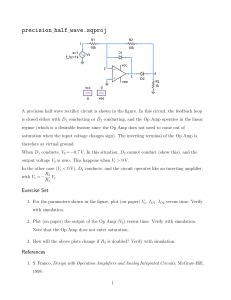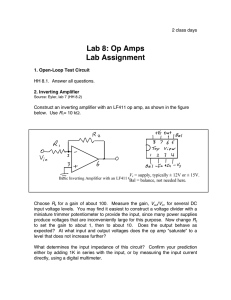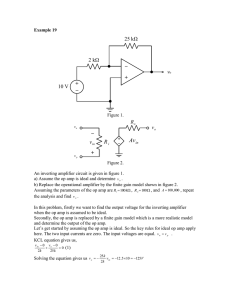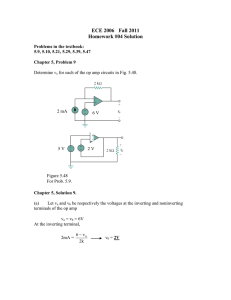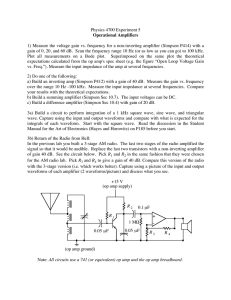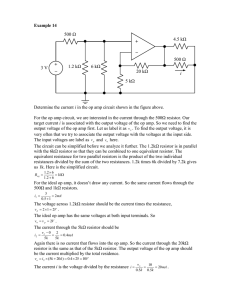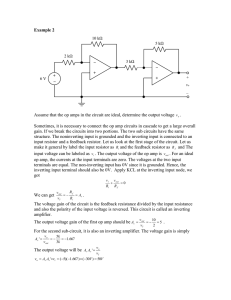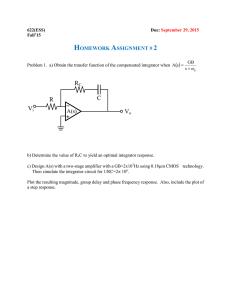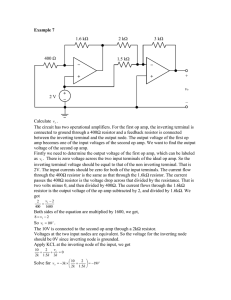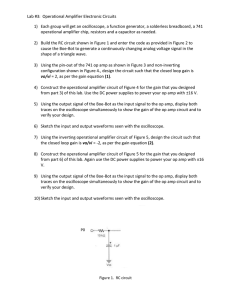Av R v _
advertisement
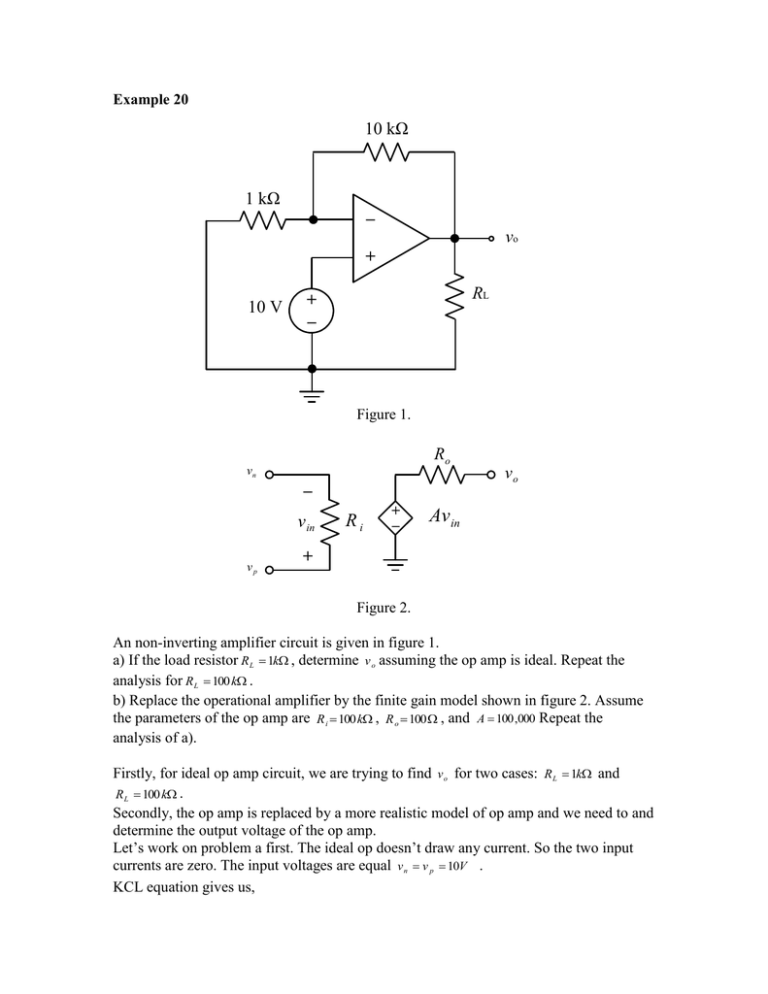
Example 20 10 kΩ 1 kΩ _ vo + 10 V RL + _ Figure 1. vn Ro v in vp vo _ Ri + _ Av in + Figure 2. An non-inverting amplifier circuit is given in figure 1. a) If the load resistor R L 1k , determine v o assuming the op amp is ideal. Repeat the analysis for R L 100 k . b) Replace the operational amplifier by the finite gain model shown in figure 2. Assume the parameters of the op amp are R i 100 k , R o 100 , and A 100 ,000 Repeat the analysis of a). Firstly, for ideal op amp circuit, we are trying to find v o for two cases: R L 1k and R L 100 k . Secondly, the op amp is replaced by a more realistic model of op amp and we need to and determine the output voltage of the op amp. Let’s work on problem a first. The ideal op doesn’t draw any current. So the two input currents are zero. The input voltages are equal v n v p 10V . KCL equation gives us, v o v in 0 v om 0 10 k 1k vo v v in in 0 10 k 10 k 1k Move the two terms two the right side of the equation, vo v v in in 10 k 10 k 1k Multiplied the equation by 10k at both sides, v o v in 10 k 10 k v in 1 v in 11 10 110V 1k 1k For problem b), ideal op amp is replaced by a finite gain model. The inverting terminal is connected with a 10V power supply through the 1k input resistor. The 10k resistor connects the inverting terminal with the output of the op amp. Let us try to analyze the circuit by node voltage method. v n vn vo v n v p 0 (1) 1 10 Ri v o A(v p v n ) v o v n v o 0 (2) Ro 10 RL v p 10 R i 100 , R o 0.1 , v o 109 .987V R L 1k v o 109 .988V R L 100 k and A 100 ,000
